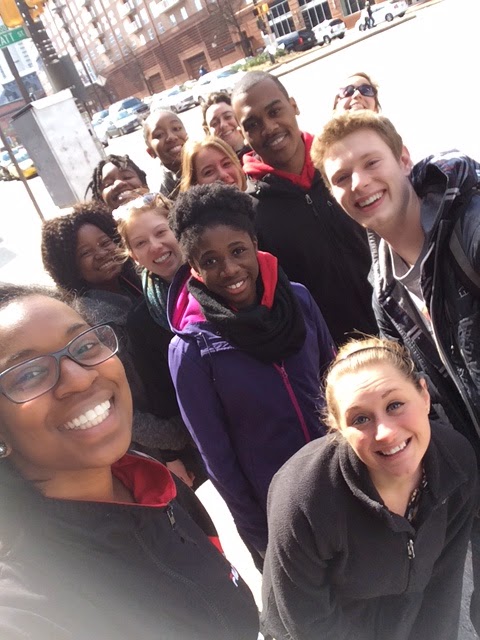U.S. Department of Housing and Urban Development (HUD)
HUD gave us a presentation about demographic data they had
recently collected and their plan for improving the housing situation in
Baltimore City. Their data linked race and employment opportunity with community
development, finding that underdeveloped communities in the city were often
isolated from employment and predominantly African American. Their plan for
improvement included several objectives:
1.
Giving marginalized communities better
opportunities by helping them move to a more affluent area.
2.
Attempting to integrate the racially segregated
neighborhoods of Baltimore.
3.
Preserve and add affordable housing to
marginalized communities.
4.
Increase opportunity in marginalized communities
by building transit infrastructure and keep areas livable.
In reflection that night, there were varying opinions about
the plan. There was support for the red line but some thought that moving
people to more affluent communities was a poor idea. The concern was what would
happen to the neighborhoods when people left, would they get worse or better?
And how would the plan improve education, if at all? Many of us thought that
the plans were decent but the funding was in question, which the officials also
mentioned.
City Steps/Restoration Gardens
After lunch, we journeyed to Park Heights to visit the
Restoration Garden transitional housing facility. Their mission is to provide
apartment-style housing for young adults ages 18-25 years old. They gave us a
tour and asked for our suggestions about how we would improve the facility for
the residents. It was a nicely renovated, spacious building and we made some
suggestions about building community among the residents.
We then went to Carriage House, a branch of the same
organization on North Avenue. It was a much smaller building that had
essentially the same purpose as Restoration Gardens but with shorter turnover. It
was a newly-acquired building and they had recently finished renovating. We
fixed some furniture and cleaned the first floor of the house.
T. Rowe Price
We were invited to a pizza dinner at T. Rowe Price because
someone who worked there was a sponsor of Alternative Breaks. We spent most of
the time talking about their Corporate Social Responsibility program. In this
program, the foundation gives grants and employees spend time volunteering at
various community organizations. They explained how their focus was financial
literacy and they had developed a game and lesson plans regarding that issue.
We were a little mystified by this because it had little to do with the issues
we were working with. Their program was also problematic because they didn’t
ask the community or any teachers if this was something that was needed or
wanted. It was also an electronic game that only families with computers and
access to the internet would be able to use, something many poor families lack.
Our visit to T. Rowe Price sparked a long conversation about
how corporations should help the community. Several people had the opinion that
corporations such as T. Rowe should have their employees teach money management
skills to nonprofits so those organizations can have the necessary funds. When
we brought this up to the T. Rowe employees, they seemed less than thrilled at
the idea. We came to the conclusion that this was because they didn’t want to
give up their services or create a situation where nonprofits no longer need
their grants.





